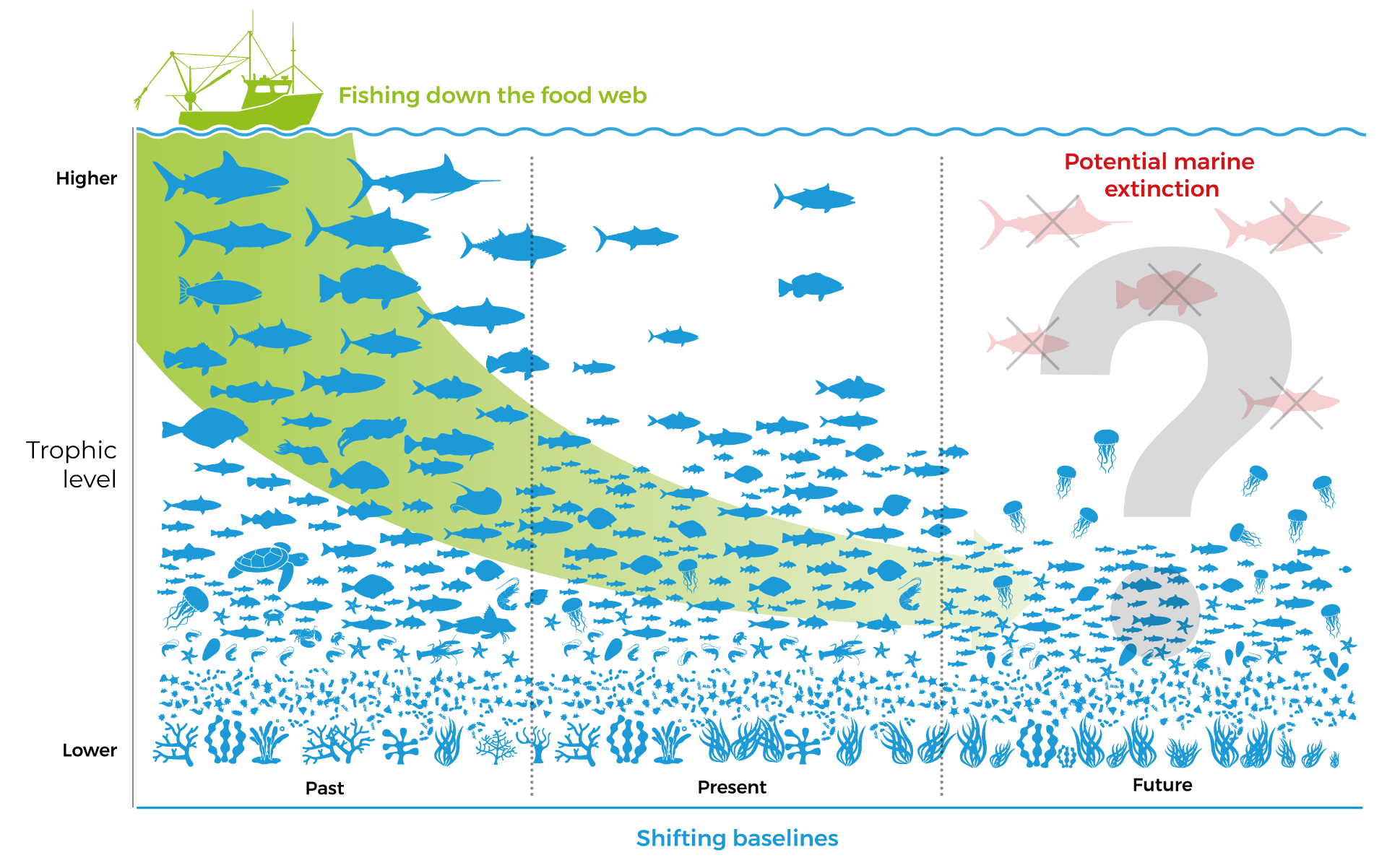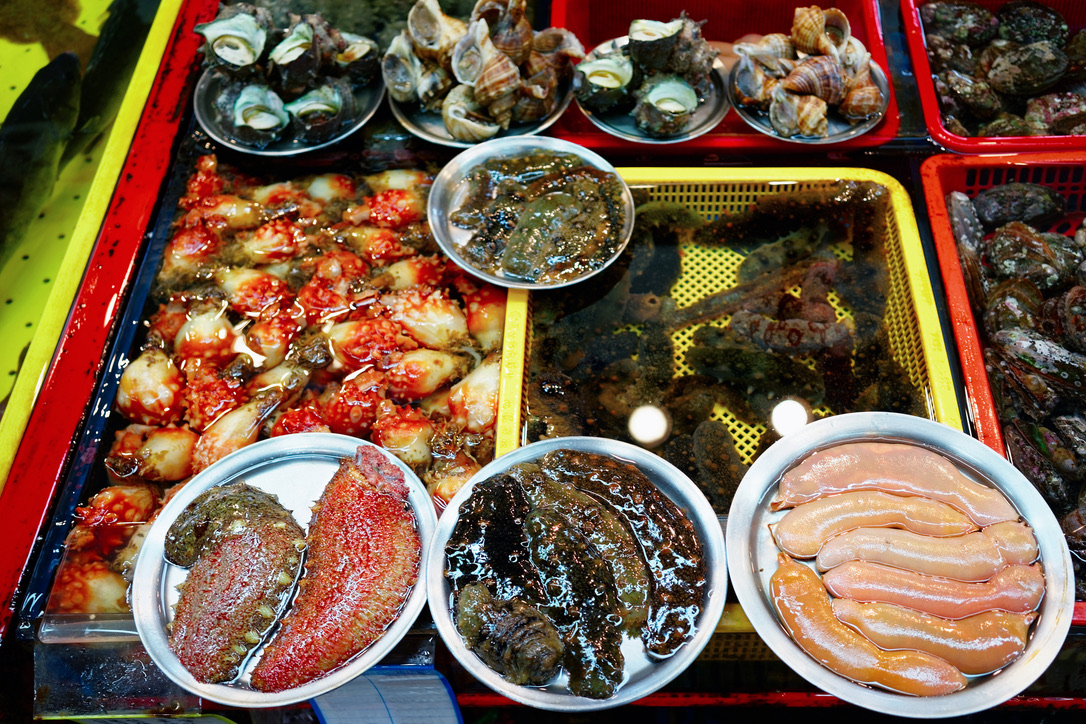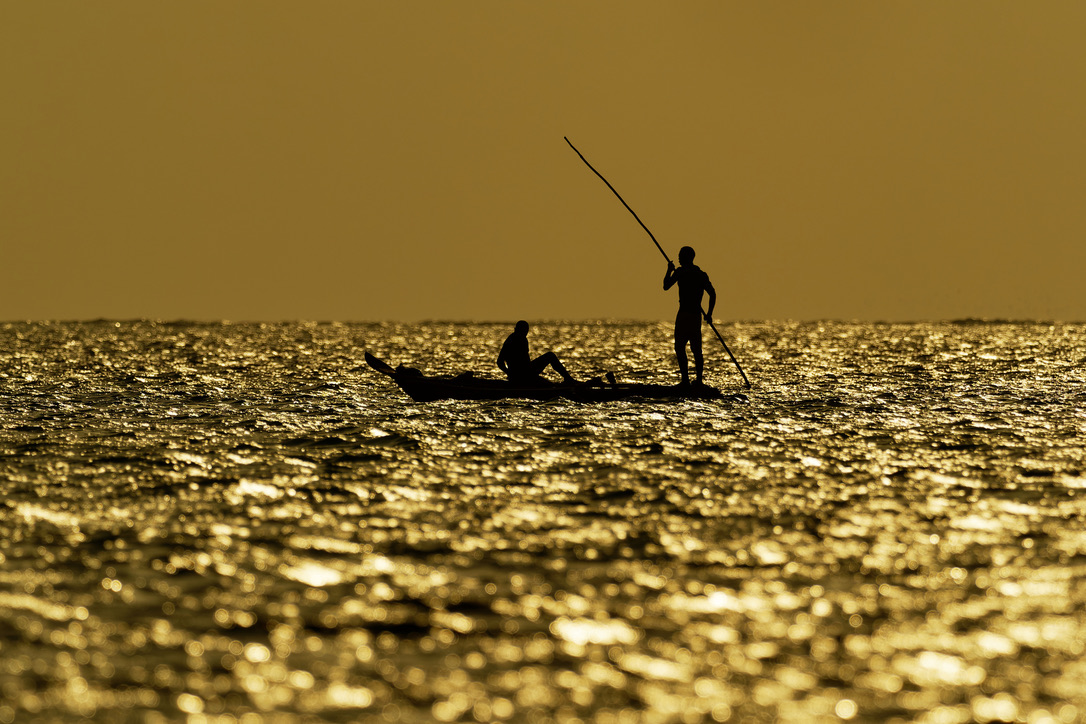The ocean provides food and livelihood to billions of people, as well as oxygen for every second breath we take. But in many aspects, the big blue stands on the brink of collapse. At the point when the pace of extinctions on land started accelerating, in fact. As demand for blue foods soars, will the ocean economy boom offer a blueprint for a sustainable food planet?
Life has existed in the ocean for three times longer than on land. What was once considered an endless resource is, of course, finite and vulnerable to human activity. Evidence clearly shows that overexploitation, climate change, and pollution are endangering biodiversity, destroying fragile marine habitats, and putting the ocean’s ability to feed us in jeopardy.
Since land-based food sources are faring even worse – and wholly exhausted for some – powerful players are rushing into the ocean. Would they extend their lucrative yet environmentally harmful and socially unjust practices to the last wild commons? Will they turn the sea into a copy of the industrial food system shaped by intensive agriculture?
Many bet on the blue economy to get right what land management got wrong. To succeed, established actors and new entrants would need to leave old habits at bay and surf new waves of thinking.
Freeing the last wild commons from our cravings
The man-made sixth mass extinction has wiped out around 500 terrestrial species over the past 500 years. In oceans, it’s radically altering marine ecosystems and the genetic structure of many species. If we continue with the status quo, human impact on marine biodiversity might soon rival that on land.

So far, scientists have recorded “only” 15 extinctions of marine species. They, however, also agree that we’re on the brink of a ripple effect as thousands of other species are endangered. On the one hand, this is a direct result of sourcing more than three-quarters of the 120 million tons of marine fish extracted from the ocean every year from overexploited stocks. On the other hand, the very activities currently in place to make up for plummeting catches represent dangers in their own right.
Understanding the deep sea, not emptying it
As fish stocks run dry, ships redirect hunting efforts beyond coastal zones. An increasing share of our beloved seafood, therefore, comes from the hyper-abundant open ocean and deep sea. This vicious cycle can create a “gold rush effect,” where we damage ecosystems before getting a chance to understand the target species’ basic biology, the implications for other species, and the ecological interactions at stake.
The ocean covers 71% of the earth’s surface. So, there’s a lot to explore and exploit, but there’s also a lot to safeguard. This thin line is critically important to realize the ocean’s role as nutrient provider. Luckily, fewer extinctions do mean that even a modest release of pressure will allow the ocean’s resilience to kick in and recovery to begin. States can play a predominant role in this balancing act since most high seas fishing would be unprofitable without large subsidies.
Curtailing diseases by farmed animals
Marine aquaculture is another coping mechanism with a long list of side effects. It contributes to the global rise of antimicrobial resistance because of the enormous amounts of antibiotics used to prevent the spread of bacteria in overcrowded enclosures. Escapee fishes infect native ones. And then some.
Mariculture’s prioritization of high-value export species like crown-jewel salmon – while wild stocks are replenishing – can also be seen as a diversion. Ship crews continue to throw highly nutrient species overboard as bycatch. Fishes that could perfectly be part of our healthy food pyramid. So, to be sustainable, the blue food economy’s offering needs to focus on people and planetary needs instead of satisfying our cravings.
Avoiding the crossing of marine tipping points
Oceans play a central role in regulating our climate. Due to its vastness and heat absorption qualities, it’s been instrumental in limiting human-induced temperature rise. It sequesters 25% of the carbon we emit. Even more impressive, between 1970 and 2010, the ocean soaked up 93% of excess heat accumulated in the Earth system. But that causes it, in turn, to warm.
Ocean warming has dire consequences on our food supply. It could lead to turnovers of over 60% of current marine biodiversity in sub-polar regions and the tropics. Most at risk are species that end up on our plates.
By taking up CO2, oceans also acidify. Ocean acidification is a high impact, high probability tipping point that already affects calcifying organisms today. A series of massive oyster die-offs have indeed been recorded in the U.S. since 2006 as acidic seawater eats away their shell, leaving them unable to feed.
And ravages of global warming will impact the big blue all the way down to the deep sea’s biological carbon pump. This is the ecologically essential mechanism by which carbon-containing compounds are exported from the surface to the deep ocean. We just don’t know how or to what degree the process will be disturbed.
Curing the ocean of the plastic plague and other poisons
The ocean has gone from wild and pristine to littered and contaminated by dreadful pollutants in just a few generations. Manufacturers have produced approximately 6,300 million metric tons of plastics since the invention of this petroleum byproduct. Only 9% has been recycled. A colossal chunk has found its way into the oceans, killing many marine animals. As it slowly breaks into smaller pieces, currents and winds scatter it further and further, century after century.

Through food, these microplastics end up in our stomachs. On average, we eat a credit card-sized amount of it each week. Microplastics have also been linked to algal and jellyfish blooms. In fact, scientists point out that humans are engineering an Anthropocene ocean much more suited for nutritionally poorer jellyfish, which thrive in gutted areas.
Besides plastic, mercury is another widespread ocean pollutant. All seafoods contain it at varying concentration levels. It’s a persistent, neurotoxic substance that can severely impact the health of those who eat fish. Unfortunately, rising ocean temperatures will further increase bioaccumulation, becoming an even more significant threat to humans.
In the face of all these threats, how can we create a sustainable blue foods future?
Shifting to nature-positive blue foods
Despite overfishing and pollution, many seafoods still compare favorably to terrestrial protein sources. Small pelagic fish and bivalves create the smallest environmental footprints across capture fisheries and aquaculture.
However, blue foods are by no means a silver bullet. As production expands and demand should double by 2050, it’s critical to prioritize sustainable practices. Regenerative marine plants then emerge as the Swiss army knives of the ocean.

When people think about food from the ocean, few think of plants. Yet, the diversity of plants flourishing in the sea is immense. Given its versatility, seaweed could become a pillar of a sustainable ocean economy. However, like many marine ecosystems, macroalgal (seaweed) and seagrass forests are degrading rapidly due to rising temperatures and marine heatwaves. Farming can come to the rescue.
Mimicking seagrass and seaweed forests, farms can protect coastlines by dampening wave energy during storms. And their environmental role doesn’t stop there. By altering PH levels and generating oxygen, they combat ocean acidification and deoxygenation locally.
These “lungs of the sea” also sequester carbon. Seaweed farms have an assessed carbon mitigation capacity of about 1 500 tons of CO2 per km² per year. Today, they capture only about 0.4% of the carbon their wild counterparts do, but estimates suggest it could rise to 6%. The marine plant also reduces emissions from terrestrial agriculture when incorporated into cattle feed, an innovative approach that allowed Future Feed to win the 2020 Food Planet Prize.
When cultivated with bivalves like mussels, marine algae can be a vital part of coastal habitat restoration. This integrated system is at the forefront of large-scale, sustainable aquaculture with a minimal environmental footprint. Once again, a Food Planet Prize Winner, this time GreenWave, is the pioneer behind this regenerative farming system.
Shifting to healthy diets with blue foods
If they are beneficial for the environment, the question then becomes: can blue foods support a shift toward a healthy food system? According to U.S. Special Envoy for Climate, John Kerry, the answer is yes. At the 2021 “Our Planet, Our Future” Nobel Summit, he declared that “We can have 50% of the food that we need from the ocean”. This may be true, but there are critical considerations to take into account.
Aquatic foods can indeed help us reduce the consumption of land animal protein, as recommended by EAT-LANCET Commission on healthy diets from sustainable food systems. They are packed with a diversity of critical nutrients difficult to get elsewhere in such density. And there remains significant untapped potential.

Of the 2,000 or so aquatic species we catch, and over 425 we farm across both freshwater and marine environments, a mere 23 species account for 70% of our diets. And they are not equally nutritious. But even less nutrient-rich blue foods may still be healthy replacements for red meat. So, we need to eat more of what we catch or farm rather than transform it into feed.
There are huge distributive differences too. Aquatic foods contribute 17% of animal protein consumed globally. In some countries, however, they represent well over 50%. But even in these countries, export is prioritized. Consequently, ship crews throw highly nutrient species overboard as bycatch, undermining their own population’s food security.
Then, intensive aquaculture’s rapid development also adds layers of nutritional challenges. It incentivizes people to move away from local fish to farmed species. In Bangladesh, for example, tilapia is replacing catfish and hilsa, which provide five times more vitamin B12 than the former.
Speeding into a bright blue foods economy
Since the ocean’s capacity to feed us all is inextricably linked to the stress we put on it,
we are prompted to protect and utilize it simultaneously. To continue to harvest precious nutrients in the future, avoiding traps land agriculture fell in and embracing novel thinking are of the essence. Securing equitable use of shrinking resources is one of such considerations.

Currently, 100 companies account for 60% of total revenues across all core ocean industries. Many are multinationals representing economic sectors, business models, and worldviews of the 20th century. This high concentration risks turning the ocean into a replica of the exploitative, unjust, and low-cost operational models used on land.
The boom of the ocean economy can seem hyper-capitalist and neo-colonialist. After all, for the most part, it disregards small-scale fishers, coastal communities, indigenous peoples, and developing island states. All the while, small-scale fisheries account for half of wild captures and over 90% of employment in the sector. Yet, they continue to be given much less weight in policy discussions and international negotiations.
Nevertheless, Stockholm Resilience Centre’s researchers argue in the recent The Blue Acceleration – The trajectory of human expansion into the global ocean that things will work out better with the renewed momentum of ocean economic development. Organizations like Blue Justice Initiative International, for instance, combat transnational illegal fishing and help achieve sustainable and equitable marine fisheries management.
Leveraging conflicts to drive transformation
The blue acceleration is no magic wand for social sustainability. Fish escaping tanks spread sea lice and other diseases in wild populations, which creates conflict with fishers. Few corporations still dominate the ocean economy, perpetuating unequal access to resources. The Focus on high-protein species, coupled with the practice of throwing perfectly nutritious “bycatch” overboard, threatens coastal fishers’ livelihoods and low-income countries’ food security. Reducing fish catches spurs illegal, unreported, and unregulated fishing, which leads to an array of conflicts worldwide. Etc. However, the ocean economy boom prompts the world to see and resolve confrontations that otherwise occur out of sight of land.
The new battleground can therefore generate opportunities for social-ecological transformation. Conflict can force the diverse group of players with diverging values and incentives to the table, finding new solutions away from incremental thinking. Low-intensity, non-escalating conflict can also effectively raise awareness, push public debate, and incubate social justice movements.
Actively exploring alternative futures can increase the chances for the ocean to remain a foundational contributor to the global food system and a source of social, cultural, and legal identity for many communities worldwide.
This article is based on the research report Can we Bring the Oceans Back from the Brink? published in November 2021. The report was commissioned by the Food Planet Prize and authored by Dr. Andrew Merrie, Stockholm Resilience Centre.